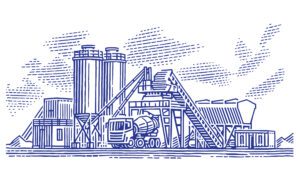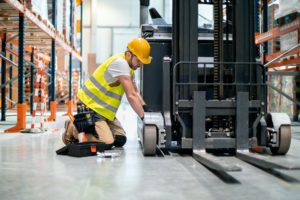How to Keep Manufacturing Workers Safe During COVID-19
While many people are being asked to work from home, a number of factory workers and engineers continue to head into work, keeping the lights on at manufacturing plants. Several plants have pivoted production operations in order to help the larger community, making much needed medical equipment.
A few examples of this include Ford, who is leveraging in-house 3D printing capabilities to manufacture face shields. Fashion label Ralph Lauren is ramping up production on 250,000 masks and 25,000 isolation gowns with their U.S. manufacturing partners. L’Oréal is producing alcohol-based hand sanitizer and donating surgical and N95 respirator masks to local hospitals.
In manufacturing environments, employees are often in close proximity to one another. Frontline workers on a packed production line can literally be shoulder-to-shoulder or face-to-face. Even when employees do not interact quite so closely, there is still a possibility for the virus to spread among employees.
If you are a manufacturing company, regardless of what you are producing, what strategies can you put in place that allow for production to resume while containing the potential spread of COVID-19? We cannot stress enough that the health and wellbeing of your team is paramount. Though we’re all aware by now of the importance of regularly washing your hands and socially distancing, what else can you do to ensure your teams are safe on the production floor?
We’ve compiled a list of best practices to help manufacturers operating during the coronavirus to minimize potential risks with their employees. These tips have been extracted from a recent LNS Research COVID-19 Leadership Roundtable discussion, as well as from the U.S. Occupational Safety and Health Administration and the Centers for Disease Control (CDC) guidelines.
- Develop an infectious disease preparedness and response plan, if you don’t already have one. The plan should include protective actions against COVID-19.
- Encourage sick workers to stay at home, develop workplace protections and flexible policies to keep sick workers at home.
- Promote frequent and thorough hand washing, providing workers with a place to wash their hands (for at least 20 seconds). If soap and running water are not available, provide alcohol-based hand sanitizer containing at least 60% alcohol.
- Employees should maintain at least 6-feet distance when in close contact with one another.
- Site entry visitor compliance, determine whether individuals that come on site exhibit symptoms of the coronavirus through answering a series of questions.
- Employee exposure screening, a questionnaire designed to help you perform a self-assessment for potential employee coronavirus exposure.
- Install physical barriers where possible, such as clear plastic sneeze guards. Enforce that all employees wear face masks, PPE and face shields while on the factory floor. This will not only protect them from potential exposure, but will also minimize asymptomatic workers from possibly transmitting the virus.
- Increase ventilation rates and the amount of outdoor air that circulates in the work environment where possible.
- Continuously disinfect and clean surfaces. You can even assign a worker on each shift to do nothing but clean surfaces.
- Change shift start and stop processes to allow for social distancing.
- Implement 2- or 3-week rotating shifts to reduce the total number of employees in a facility at a given time, allowing them to maintain distance from one another while maintaining a full onsite work week.
- Establish remote access to scale subject matter expertise from experts who can no longer travel.
- Use existing general collaboration technology tools to help implement COVID-19 response.
- Begin preparing a knowledge capture and rapid training system to help quickly onboard new staff. Take this opportunity to offer cross-training services for workers to fill other roles within the production process.
There is much uncertainty around COVID-19 and how long the crisis will last. It’s vital for manufacturers to implement safe practices as this may become the new normal for the foreseeable future. While working remotely is something that isn’t possible for many factory employees, any steps you can take now to protect your workers and prevent the potential spread of the virus are critical for your future operations.






